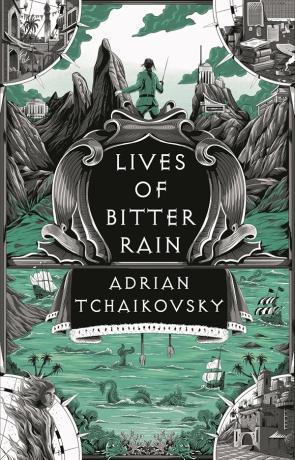Amazon bows to publisher pressure

Last week Amazon was forced to remove thousands of e-books from it's US site after one of the 6 biggest book publishers in the world, Macmillan announced that they wanted the ebook prices to be significantly raised from the current standard of $9.99
This week Amazon has caved into the pressure from Macmillan and has now re-instated the ebooks at these inflated prices, between $12.99 and $14.99 for most hardback releases. According to this new agreement the publisher will be able to set the final retail price between the $12.99 and $14.99 figure. In addition the revenue share has been changed to a 70:30 share in favour of the publishers.
This is a completely unprecedented move by Macmillan, as publishers usually set a "reccomended retail price" and the merchant sets their final price after this, for a publisher to set the actual final price is quite frankly unrealistic and unmarketable in the long term.
In a time when the new emergent ebook format needs every help it can get to gain a foothold share of the book market, this move is likely to harm uptake of ebooks significantly, especially as consumers can actually find a hardback book in a sale cheaper than the equivalent ebook.
From a consumers standpoint, the saving an ebook has over it's physical counterpoint should be passed on, but is that realistic, and just how much of the cost of a novel actually goes into the typesetting, editing, binding/printing, artwork and distribution?
There are a number of articles around the web that have looked into this, and the prices and percentages do vary with each report however they all share the commonality that ebooks should be lower priced than they currently are for the major ebook publishers.
One of the more interesting articles is on the website bookfinder.com, which itself draws on an article from "the money magazine", breaking down the cost of a fairly recent "John Grisham" novel "The Associate" , sold in the US market.
Based on the recommended retail price (RRP) of $27.95, the cost would be most likely split as follows:
- $3.55 (12.7%) - Pre -Production Costs, editors, graphic designers etc.
- $2.83 (10.1%) - Printing - The physical print process.
- $2.00 (7.2%) - Marketing - Book tours, Adverts, etc.
- $2.80 (10.0%) - Wholesaler - Cost to the guys who handle all the distribution logistics.
- $4.19 (15.0%) - Author Royalties - Pretty small slice considering it's the Authors work we are talking about!, within this cost is also the Authors Agents wages too! Big well known Authors can get around 15% but lesser known Authors can expect less than this.
This leaves $12.58 (45.0%), which is essentially the profit margin for the retailer / publisher, however this is of course if the book sold at the RRP, which many don't. Most books are sold to the retailer at a discount by the Wholesaler, you can expect a discount of up to 50% for the big releases, smaller releases are discounted less (economies of scale), around 20-30%.
Of course the retailer has their own costs, and then take into account the discount the book sells for and you get the final profit margin.
So looking at the above, with an ebook you can safely take out the printing costs, the wholesalers costs and some of the pre-production costs. This could mean a saving of $8.60 (based on halving the pre-production costs), a significant saving of 31%.
So are ebooks 31% cheaper than their physical counterparts?, they don't seem to be, in some cases I have actually seen the physical book at a lower price than the ebook equivalent. There is no way that the ebook is going to compete under these conditions, why spend more on a ebook when you can have the actual real physical book delivered, which you can sell on second hand, something else you can't do with an ebook!.
News Archives
- August 2024
- July 2023
- April 2023
- February 2023
- September 2022
- March 2022
- February 2022
- July 2021
- June 2021
- April 2021
- March 2021
- January 2021
- October 2020
- September 2020
- June 2020
- March 2020
- May 2019
- January 2019
- November 2018
- January 2016
- September 2015
- August 2015
- July 2015
- June 2015
- May 2015
- April 2015
- March 2015
- January 2015
- October 2014
- June 2014
- April 2014
- March 2014
- February 2014
- January 2014
- December 2013
- November 2013
- October 2013
- September 2013
- June 2013
- May 2013
- April 2013
- March 2013
- January 2013
- December 2012
- November 2012
- August 2012
- July 2012
- June 2012
- May 2012
- April 2012
- March 2012
- February 2012
- January 2012
- December 2011
- November 2011
- October 2011
- September 2011
- August 2011
- July 2011
- June 2011
- May 2011
- April 2011
- March 2011
- February 2011
- January 2011
- December 2010
- November 2010
- October 2010
- September 2010
- August 2010
- July 2010
- June 2010
- May 2010
- April 2010
- March 2010
- February 2010
- January 2010
- December 2009
- November 2009
- October 2009
- September 2009
- August 2009
- July 2009
- June 2009
- May 2009
- April 2009
- March 2009
- February 2009
- January 2009
- December 2008
- November 2008
- October 2008
- September 2008
